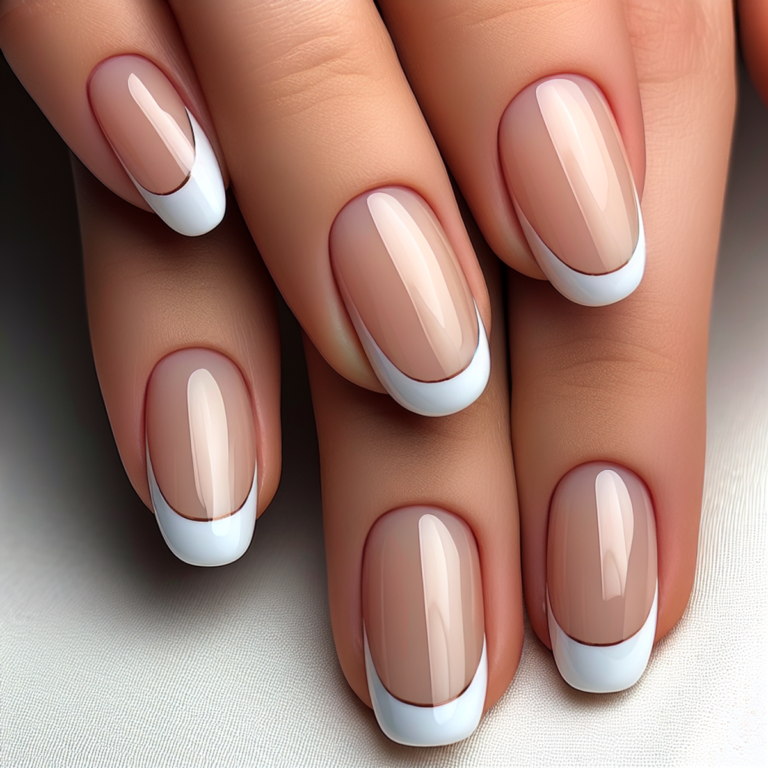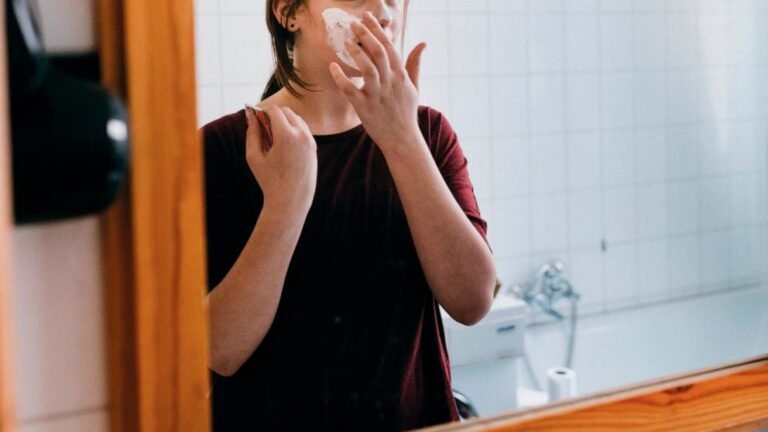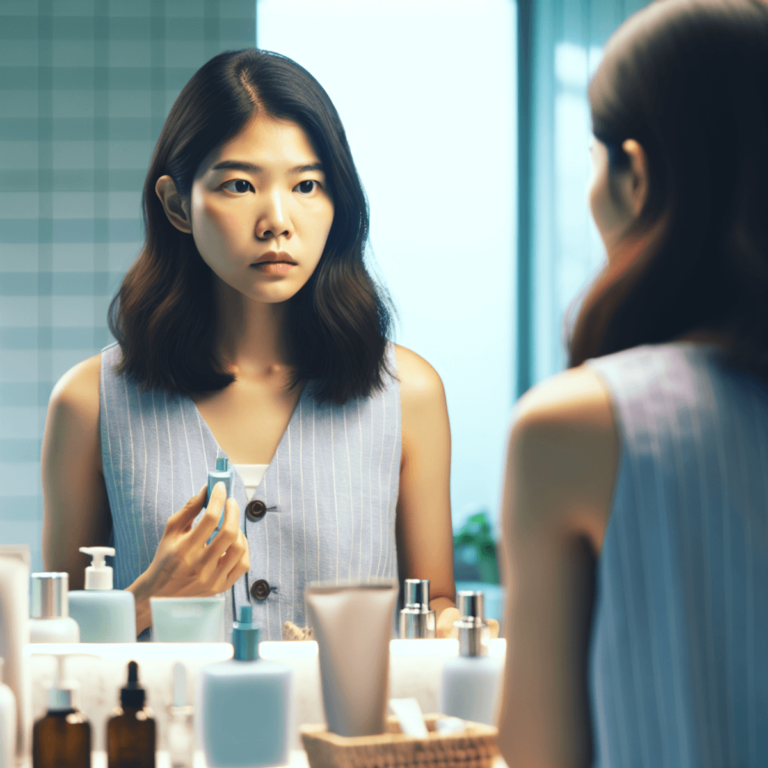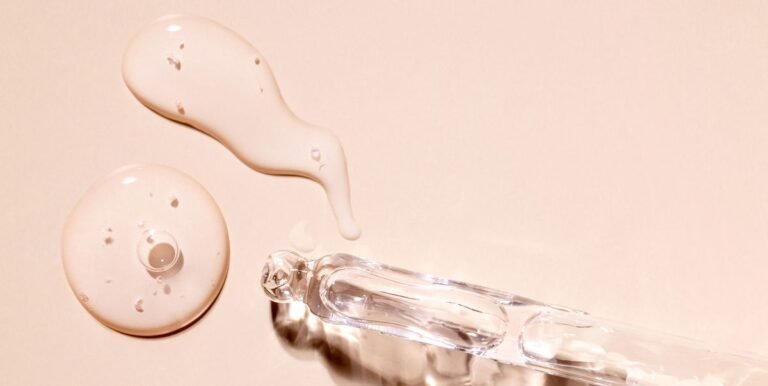The Best Skin Care for Rosacea: Hardworking Products for Soothing Redness & Irritation

Introduction
Rosacea is a chronic skin condition that causes redness, inflammation, and pimple-like bumps on the face, neck, and chest. Taking care of your skin is crucial in managing and reducing rosacea symptoms. In this article, we will provide you with a complete understanding of rosacea and recommend expert-approved products that can help soothe redness and irritation.
We will cover everything from the main symptoms of rosacea to the best skincare products specifically designed to treat its effects. Whether you’re looking to learn more about rosacea or find effective solutions for your sensitive skin, this article has got you covered!
Understanding Rosacea
Rosacea is a chronic skin condition that affects millions of people worldwide. It is characterized by persistent redness, facial flushing, inflamed papules, and visible blood vessels known as telangiectasia. Individuals with rosacea often experience these primary symptoms, which can significantly impact their quality of life.
The chronic nature of rosacea means that it requires ongoing management to alleviate its symptoms and prevent flare-ups. Understanding the key characteristics and manifestations of rosacea is crucial for developing an effective skincare routine tailored to address its specific needs.
Comprehensive Understanding of Rosacea
- Rosacea is a common skin disorder that typically affects the central face, including the cheeks, nose, chin, and forehead. However, it can also manifest on the neck and chest.
- While the exact cause of rosacea remains unknown, various factors such as genetics, environmental triggers, and vascular abnormalities are believed to contribute to its development.
- The condition tends to progress in stages, with early symptoms often mistaken for transient redness or acne. As it advances, persistent redness becomes more pronounced and may be accompanied by burning or stinging sensations.
Primary Symptoms of Rosacea
- Persistent Facial Redness: One of the hallmark signs of rosacea is a persistent redness that may resemble a sunburn or blush. This redness is not temporary and tends to worsen over time.
- Facial Flushing: Individuals with rosacea may experience sudden episodes of facial flushing or blushing triggered by various stimuli such as heat, sunlight, spicy foods, alcohol, or emotional stress.
- Inflamed Papules: Small, red bumps resembling acne may appear on the affected areas. These papules are often tender and can contribute to feelings of discomfort and self-consciousness.
- Telangiectasia (Visible Blood Vessels): Dilated blood vessels near the skin’s surface become visible, giving rise to a web-like pattern that further contributes to the overall redness.
Understanding these primary symptoms is essential for tailoring an effective skincare regimen that addresses the specific needs of individuals living with rosacea. By acknowledging the chronic nature of this condition and its impact on daily life, it becomes possible to approach skincare practices with empathy and precision.
To learn more about rosacea, you can visit resources like rosacea.org or delve into comprehensive studies on the topic such as those found on ScienceDirect. Additionally, it is important to identify and avoid triggers that can exacerbate the symptoms and take preventive measures accordingly.
The Importance of Gentle and Nourishing Skin Care for Rosacea-Prone Skin
Rosacea is a chronic skin condition that requires delicate care to manage its symptoms effectively. Creating a gentle and nourishing skincare routine plays a crucial role in minimizing rosacea flare-ups and promoting overall skin health.
Exploring the Link between Appropriate Skincare Routine and Reducing Frequency of Flare-Ups
Establishing a suitable skincare regimen tailored to rosacea-prone skin can significantly contribute to reducing the frequency and intensity of flare-ups. By selecting products that are non-irritating and gentle on the skin, you can help maintain a balanced and calm complexion.
Key Principles in Formulating a Gentle yet Effective Regimen
When formulating a skincare routine for rosacea management, several key principles should be considered to ensure effectiveness and minimal irritation:
- Gentle Cleansing: Opt for mild, non-abrasive cleansers that do not strip the skin of its natural oils. Look for products with soothing ingredients such as aloe vera, chamomile, or green tea to cleanse without causing further redness or inflammation.
- Avoiding Alcohol: Alcohol-based skincare products can exacerbate rosacea symptoms by causing dryness and irritation. Therefore, it’s essential to steer clear of toners, astringents, or other products containing high levels of alcohol.
- Moisturizing: Hydrating the skin is crucial for individuals with rosacea. Choose moisturizers formulated with hydrating ingredients like ceramides, glycerin, and hyaluronic acid to support the skin barrier and prevent moisture loss.
Application Techniques for Gentle Care
In addition to selecting appropriate products, the way you apply them can also impact their effectiveness. When caring for rosacea-prone skin:
- Gentle Application: Avoid harsh rubbing or tugging on the skin when applying products. Instead, use light patting or pressing motions to minimize friction and reduce potential irritation.
- Minimal Product Use: While it’s important to maintain adequate hydration, using an excessive amount of product may overwhelm the skin and lead to discomfort. Apply products in moderation to avoid overwhelming sensitive skin.
By adhering to these principles and techniques, you can establish a gentle yet effective skincare routine specifically designed for managing rosacea-prone skin.
Key Products for Soothing and Calming Rosacea Symptoms
When it comes to dealing with rosacea symptoms such as redness and irritation, finding the right products that provide soothing relief is crucial. Hydration and barrier repair play a significant role in calming rosacea-affected skin. Using topical treatments like moisturizers formulated with specific ingredients can provide intense hydration while strengthening the skin’s protective barrier. Here are some key products to consider for soothing and calming rosacea symptoms:
- Moisturizers with Ceramides: Ceramides are essential lipids that help maintain the skin’s moisture barrier. By using moisturizers containing ceramides, you can restore hydration to your skin and reduce redness. Look for products that mention ceramides high up in their ingredient list.
- Glycerin: Glycerin is a humectant that attracts moisture from the environment to your skin, keeping it hydrated and supple. It helps soothe dryness and reduce redness associated with rosacea. Look for moisturizers or serums that contain glycerin as one of the main ingredients.
- Hyaluronic Acid: Hyaluronic acid is another powerful hydrating ingredient that can hold up to 1000 times its weight in water. It helps plump and hydrate the skin, reducing redness and irritation caused by rosacea. Look for serums or moisturizers with hyaluronic acid to provide an extra boost of hydration.
- Barrier Repair Creams: Barrier repair creams are specifically designed to strengthen the skin’s natural protective barrier. These creams often contain ingredients like ceramides, niacinamide, or peptides, which help reinforce the skin’s defenses and reduce sensitivity. Using a barrier repair cream can help calm inflamed skin and minimize future flare-ups.
- Soothing Masks: Incorporating soothing masks into your skincare routine can provide instant relief for rosacea symptoms. Look for masks with ingredients like aloe vera, cucumber, or green tea, as they have anti-inflammatory properties that help soothe redness and irritation. Apply the mask for 10-15 minutes once or twice a week to help calm your skin.
Remember, everyone’s skin is unique, so it’s essential to patch test new products before incorporating them into your skincare routine. Additionally, consult with a dermatologist or skincare professional for personalized recommendations based on your specific needs and concerns.
By using hydrating moisturizers with ingredients like ceramides, glycerin, and hyaluronic acid, you can provide intense hydration to your rosacea-prone skin while strengthening its protective barrier. Additionally, incorporating barrier repair creams and soothing masks into your routine can further calm redness and irritation associated with rosacea. Experiment with different products to find the ones that work best for you, and don’t hesitate to seek professional advice for personalized skincare recommendations.
Enhancing Rosacea Care with Sun Protection
Understanding the sun’s role as a common trigger for rosacea symptoms and the need for adequate protection is essential. Sun exposure can make redness, swelling, and sensitivity worse in people with rosacea. So it’s important to use sunscreen that works well for your skin.
Here are some important things to know about using sunscreen for rosacea:
- Choose broad-spectrum sunscreens: Look for sunscreens that protect against both UVA and UVB rays. These types of sunscreens are called “broad-spectrum” and they provide better coverage against the sun’s harmful effects.
- Use SPF 30 or higher: Look for a sunscreen with an SPF (sun protection factor) of 30 or higher. This will give you good protection against the sun’s damaging rays.
- Consider physical sunscreens: Physical sunscreens contain ingredients like zinc oxide and titanium dioxide, which sit on top of the skin and block UV rays. They may be less likely to irritate sensitive skin compared to chemical sunscreens.
Adding these steps to your daily skincare routine can help protect your skin from the sun and reduce flare-ups caused by sun exposure. Make sure to apply sunscreen generously to all exposed areas of your face and neck, including your ears.
Remember: preventing sun damage is important for long-term skin health if you have rosacea.
Tips for Using Sunscreen Effectively
To make sure you’re getting the most out of your sunscreen, here are some additional tips to keep in mind:
- Reapply every two hours: Sunscreen wears off over time, so it’s important to reapply every two hours if you’re outside or sweating.
- Avoid being in direct sunlight from 10 a.m. to 4 p.m.: This is when the sun’s rays are strongest. If you have to be outside during these hours, try to stay in the shade as much as possible and wear protective clothing along with your sunscreen.
- Use other forms of sun protection: Sunscreen alone isn’t enough to fully protect your skin. Consider wearing a wide-brimmed hat, sunglasses, and lightweight clothing that covers your arms and legs for extra protection.
By following these guidelines, you can make sun protection a priority in your skincare routine and help manage your rosacea symptoms more effectively.
Additional Strategies for Rosacea Management
When it comes to managing rosacea, incorporating additional strategies beyond skincare products can play a crucial role in alleviating symptoms and promoting overall skin health. Here are some key points to consider:
1. Incorporating Soothing Ingredients
- Aloe Vera: Known for its anti-inflammatory and cooling properties, aloe vera can help soothe redness and irritation associated with rosacea. Look for gentle skincare products containing aloe vera as a key ingredient to provide calming relief for sensitive skin.
- Cucumber: Cucumber is recognized for its hydrating and refreshing qualities, making it a beneficial ingredient for rosacea-prone skin. Products containing cucumber extract or cucumber water can help reduce inflammation and provide a soothing sensation when applied to the skin.
- Green Tea: With its antioxidant and anti-inflammatory properties, green tea can contribute to reducing redness and promoting skin comfort. Consider incorporating skincare formulations enriched with green tea extract to harness its soothing effects.
2. Identifying and Avoiding Triggers
Lifestyle modifications and self-care practices are essential for individuals with rosacea to identify and avoid triggers that may exacerbate their symptoms. Stress management techniques, such as meditation, deep breathing exercises, or yoga, can aid in minimizing stress-related flare-ups. Additionally, keeping a journal to track activities, environmental factors, and food intake can help pinpoint specific triggers such as those related to sun exposure (sun rash), allowing for informed adjustments in daily routines (learn more about sun rashes here).
By integrating these additional strategies into your approach to rosacea management, you can complement the benefits of skincare products with holistic practices aimed at promoting skin comfort and minimizing potential triggers.
Expert-Recommended Products for Rosacea
When it comes to managing rosacea-prone skin, it’s essential to use products that are specifically formulated to soothe and alleviate redness and irritation. Dermatologist-recommended products play a crucial role in providing effective care for individuals dealing with rosacea. These expert-recommended products are carefully curated to address the unique needs of sensitive and reactive skin, offering gentle yet potent solutions for managing rosacea symptoms.
Gentle Cleansers
- Cleansing Milk: Look for a gentle cleansing milk specifically designed for sensitive skin. These cleansers effectively remove impurities and makeup without causing further irritation. Opt for formulas that contain soothing ingredients such as chamomile or oat extract to calm redness and inflammation.
- Cream Cleanser: Cream-based cleansers with hydrating properties can help maintain the skin’s moisture balance while gently cleansing the skin. Ingredients like glycerin and ceramides can contribute to strengthening the skin barrier, reducing sensitivity and dryness.
Mineral Sunscreens
- Physical Sunscreen: Mineral sunscreens featuring zinc oxide and titanium dioxide provide effective broad-spectrum protection against UVA and UVB rays without causing irritation. These gentle formulations create a protective barrier on the skin’s surface, making them suitable for rosacea-prone individuals.
- SPF Moisturizer: Opt for a moisturizer with built-in SPF protection to streamline your skincare routine. Look for lightweight, non-comedogenic formulas that offer both hydration and sun protection without clogging pores or triggering redness.
Niacinamide-Infused Treatments
- Soothing Serums: Serums containing niacinamide (vitamin B3) can help reduce redness and strengthen the skin’s natural barrier. Niacinamide possesses anti-inflammatory properties, making it an excellent addition to a rosacea skincare regimen.
- Calming Lotions: Niacinamide-infused lotions or creams can effectively soothe irritated skin while promoting a more even complexion. These formulations work to minimize redness and discomfort associated with rosacea, supporting overall skin health.
Azelaic Acid Formulations
- Redness-Reducing Creams: Azelaic acid is known for its anti-inflammatory and antimicrobial properties, making it beneficial for managing rosacea symptoms. Creams or gels containing azelaic acid can help diminish redness and blemishes associated with rosacea, promoting a calmer complexion over time.
Tretinoin-Infused Moisturizers
- Moisturizer Creams: While not directly targeted for rosacea, some individuals have found success in using moisturizer creams with tretinoin to manage their symptoms. These creams, typically used for other dermatological concerns such as acne or anti-aging, may provide additional benefits for rosacea-prone skin. However, it’s important to consult with a dermatologist before incorporating them into your routine.
By incorporating these expert-recommended products into your daily skincare routine, you can effectively address the specific concerns of rosacea-prone skin while nurturing its overall
Seeking Professional Advice: The Role of Dermatologists in Rosacea Treatment
When it comes to managing rosacea, seeking professional advice from a dermatologist is crucial for comprehensive treatment. Dermatologists play a key role in providing personalized care and guidance tailored to individual skin needs. Their expertise can encompass a range of medical treatments and interventions that extend beyond skincare products.
Importance of Dermatologist Consultation
- Personalized Assessment: Dermatologists can conduct a thorough evaluation of your skin condition, taking into account the specific symptoms and triggers that affect you.
- Treatment Planning: Based on the severity of your rosacea and its impact on your daily life, dermatologists can develop a customized treatment plan that may involve prescription medications, topical treatments, or procedural interventions.
- Monitoring Progress: Regular consultations with a dermatologist allow for ongoing assessment of treatment efficacy and potential adjustments to optimize results.
Medical Treatments for Rosacea
- Prescription Medications: Dermatologists may prescribe oral antibiotics or topical antibiotics to manage inflammation and control bacterial overgrowth associated with rosacea.
- Topical Treatments: In addition to over-the-counter products, dermatologists can recommend prescription-strength topical treatments containing ingredients like azelaic acid, metronidazole, or ivermectin to target redness and inflammation.
- Procedural Interventions: For individuals with persistent redness or visible blood vessels (telangiectasia), dermatologists may perform laser therapy or other in-office procedures to minimize these symptoms.
Collaboration with Skincare Routine
Dermatologist-recommended skincare products can complement medical treatments for rosacea, forming an integrated approach to managing the condition. By aligning your at-home skincare regimen with professional guidance, you can optimize the soothing and calming effects on your skin.
By consulting with a dermatologist, individuals with rosacea can gain access to advanced treatment options and expert insights that go beyond the scope of over-the-counter solutions. This collaborative approach between professional medical care and diligent skincare practices empowers individuals to effectively manage their rosacea and achieve healthier skin.
Lifestyle Tips for Living Well with Rosacea
Living well with rosacea involves more than just skincare. Lifestyle adjustments can significantly complement the effects of a good skincare routine in minimizing the impact of rosacea on your daily life. Here are some lifestyle tips to help you manage your rosacea effectively:
1. Maintain a Consistent Routine
Consistency is key when it comes to managing rosacea. Establishing a regular daily routine for skincare, diet, exercise, and sleep can help minimize potential triggers and maintain skin equilibrium.
2. Practice Stress-Reduction Techniques
Stress is a common trigger for rosacea flare-ups. Engaging in stress-reduction techniques such as meditation, yoga, deep breathing exercises, or mindfulness practices can help keep stress levels in check and reduce the likelihood of exacerbating rosacea symptoms.
3. Protect Your Skin from Environmental Triggers
Avoiding environmental triggers such as extreme cold or hot temperatures, wind exposure, and air pollution can help prevent flare-ups. Consider using protective clothing like scarves or hats to shield your skin from harsh weather conditions.
4. Choose Rosacea-Friendly Exercise Activities
Engage in low-impact exercise activities that are less likely to trigger flushing or overheating, such as walking, swimming, or cycling. It’s also essential to exercise in a cool environment and stay well-hydrated during physical activities.
5. Maintain a Balanced Diet
Certain foods and beverages can trigger rosacea symptoms in some individuals. While triggers vary from person to person, common culprits include spicy foods, hot beverages, alcohol, and histamine-rich foods. Maintaining a balanced diet and keeping a food diary can help identify potential triggers and manage dietary influences on rosacea.
6. Seek Emotional Support
Living with a chronic skin condition like rosacea can be emotionally challenging at times. Seeking emotional support from friends, family members, or support groups can provide valuable reassurance and understanding while helping you navigate the emotional impact of the condition.
7. Stay Informed and Educated
Continuously educate yourself about rosacea management strategies, skincare innovations, and lifestyle adjustments recommended by healthcare professionals. Staying informed empowers you to make proactive choices that support your overall well-being.
By incorporating these lifestyle tips into your daily routine, you can complement your skincare efforts and create an environment that minimizes triggers while promoting overall skin health.
In Conclusion
As the saying goes, “Beauty begins with healthy skin.” When it comes to managing rosacea, this sentiment rings especially true. By adopting a holistic approach that combines proper skincare, professional guidance, and self-empowerment, you can soothe redness and irritation associated with rosacea-prone skin.
Throughout this article, we have explored the ins and outs of rosacea and the importance of gentle and nourishing skincare. We’ve discussed key products for soothing and calming rosacea symptoms, including moisturizers formulated with ceramides, glycerin, and hyaluronic acid. We’ve also highlighted the significance of sun protection and incorporating soothing ingredients like aloe vera, cucumber, and green tea into your skincare routine.
It is essential to remember that everyone’s skin is unique. While we provide expert-recommended products for rosacea-prone individuals, it is crucial to patch test new products and consult with a dermatologist before incorporating them into your regimen. They can offer personalized advice based on your specific needs.
By embracing a comprehensive approach to caring for your rosacea-prone skin, you can effectively manage your symptoms and achieve healthy-looking skin. Take the time to explore the recommended products and strategies outlined in this article while staying mindful of your individual skin’s needs. With patience and diligence, you can find a routine that works best for you and regain confidence in your skin.
Remember: You are not alone in this journey. Reach out to professionals for guidance, practice self-care techniques to reduce stress levels, and embrace the power of knowledge as you navigate the world of skincare for rosacea.










